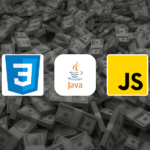C Programming language
In this post, we will look at the introduction to the C Programming Language and its history, as well as answers to any queries you may have, such as what is a programming language.
Quick links
- What’s a programming language?
- Low and high-level programming languages
- Introduction to c programming language
What's a programming language?
A computer is a multipurpose electrical machine that operates on a binary numeral system. This machine cannot function on its own unless we give it instructions.
Computers are non-living things so they cannot think and they only perform
Work according to a set of instructions. Actually, they are scripted Through these sets of instructions. These sets of instructions are called Programs or software and the person writing these instructions is referred to as A
programmer.
Only machine code can be read by computers (100010 ... ...). Writing code in machine language is like counting the hair on our heads. I mean, it's too difficult, which is why programming languages exist to make our lives simpler.
As programmers, we are at ease creating code or instructions in English. However, the code in English for computers is gibberish, therefore a programme called a compiler just translates English code into machine code.
You may now understand that a programming language is a tool that allows a programmer to deliver a set of instructions to a machine. A computer may apply these instructions to execute a variety of activities, such as generating 3D visuals in video games and displaying them to the user, as well as mathematical operations such as addition, subtraction, multiplication, and more.
Every computer has a central processing unit (CPU) that understands and executes machine code.
In computer science, there are several programming languages, some of which are widely used, such as c / c ++, java, c #, python, and javascript. C ++ is an enhanced version of C with additional capabilities.
Each programming language has its own flavour and offers distinct features and rules to programmers, much like grammar rules in real-world languages.
Learning C as your first programming language will take you around 6 to 8 months. If you study C / C ++ and understand all of the programming principles, you will be able to learn any programming language, such as Java, C #, and Python, within a week.
What are Low-level and high-level programming languages?
A high-level programming language is one in which programmers do not think extensively about the fundamental structure of computer hardware and how it works.
Clearly, greater or lower is a degree of abstraction, thus higher-level programming languages will abstract the underlying workings. High-level programming languages are unconcerned with hardware internals.
Low-level programming languages, on the other hand, are very near to the internal workings of computer hardware. An example of a low-level programming language is assembly language.
Introduction to C programming language
C is a general-purpose, high-level programming language and was originally designed to build a UNIX operating system by Dennis Ritchie in 1972 at Bell laboratories of American telephone & telegraph.
The C programming language is so popular and the programs that are written in C
runs very faster than any programming language. Also, C is called the mother of all programming languages.
Where C has been used?
Many browsers, including Mozilla Firefox, Google Chrome, and Safari, are developed in C.
The C programming language is also used to develop the most popular picture editing software, Adobe Photoshop. There are so many real-world initiatives that you may learn more by doing a Google search.
C is also used in embedded systems such as Raspberry Pi.
There are several operating systems written in C, including Windows, Ubuntu, Chrome OS, and Android.


